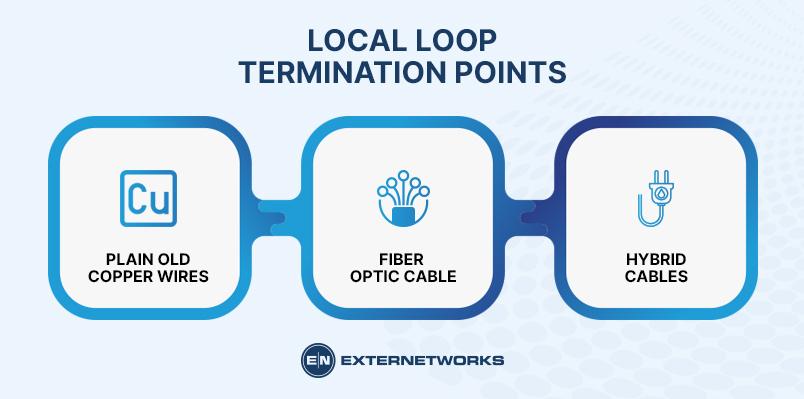28.4k views
Telco termination points are the points where the phone company connects your telephone line to the public switchboard. These points are usually located at the customer’s home or business. The telco termination point is also known as the local loop.
The local loop is the physical connection between the telephone company’s central office and the subscriber’s house. At the end of the day, the local loop is the last link in the chain that takes calls from the outside world and delivers them to their destination inside your home.
The local loop consists of two parts: the tip and ring wires. Tip refers to the wire coming out of the wall jack at the side of your home. Ring refers to the wire running back towards the main telephone pole.
Tip and ring wires connect to the central office through a junction box called a splice block. Splice blocks contain fuses and circuit breakers that protect against short circuits and overloads.
In addition to the tip and ring wires, there are several other wires that run throughout your home. They include ground wires, which provide power to the electrical outlets in your home; neutral wires, which carry electricity away from appliances like refrigerators and air conditioners; and protective earth wires, which help prevent electric shock by providing a path for electricity to flow back into the utility grid if something goes wrong with the wiring.
Most homes have three types of local loops:

Most homes have plain old copper wires. Plain old copper wires are made of thin metal strands twisted together to form a long rope-like cord. When you plug a device into a wall outlet, it attaches to one of the wires in this cord.
Copper wires can be found in every room of your home. In fact, they are probably already connected to some of your devices. For example, your television may use a single pair of copper wires to send signals to your TV. Other common uses for copper wires include:
Fiber optic cable is much thinner than copper wire. It looks like a string of tiny glass tubes. Each tube contains light waves traveling down the length of the cable. Fiber optic cable transmits information faster than copper wire because it doesn’t lose any signal along its length.
Fiber optic cable comes in different varieties. Some are designed to transmit voice and video signals while others are only capable of carrying data.
Some homes have hybrid cables instead of plain old copper wires. Hybrid cables combine both copper and fiber optics. Like fiber optic cable, hybrid cables are very thin and look like strings of glass tubes. But unlike fiber optic cable, hybrid cable also includes copper wires. These wires allow hybrid cables to work with older devices that don’t support fiber optic connections.
In conclusion, the local loop is a bundle of wires that connects the central office to your house. The local loop is the final piece of the puzzle that makes up the phone system.
